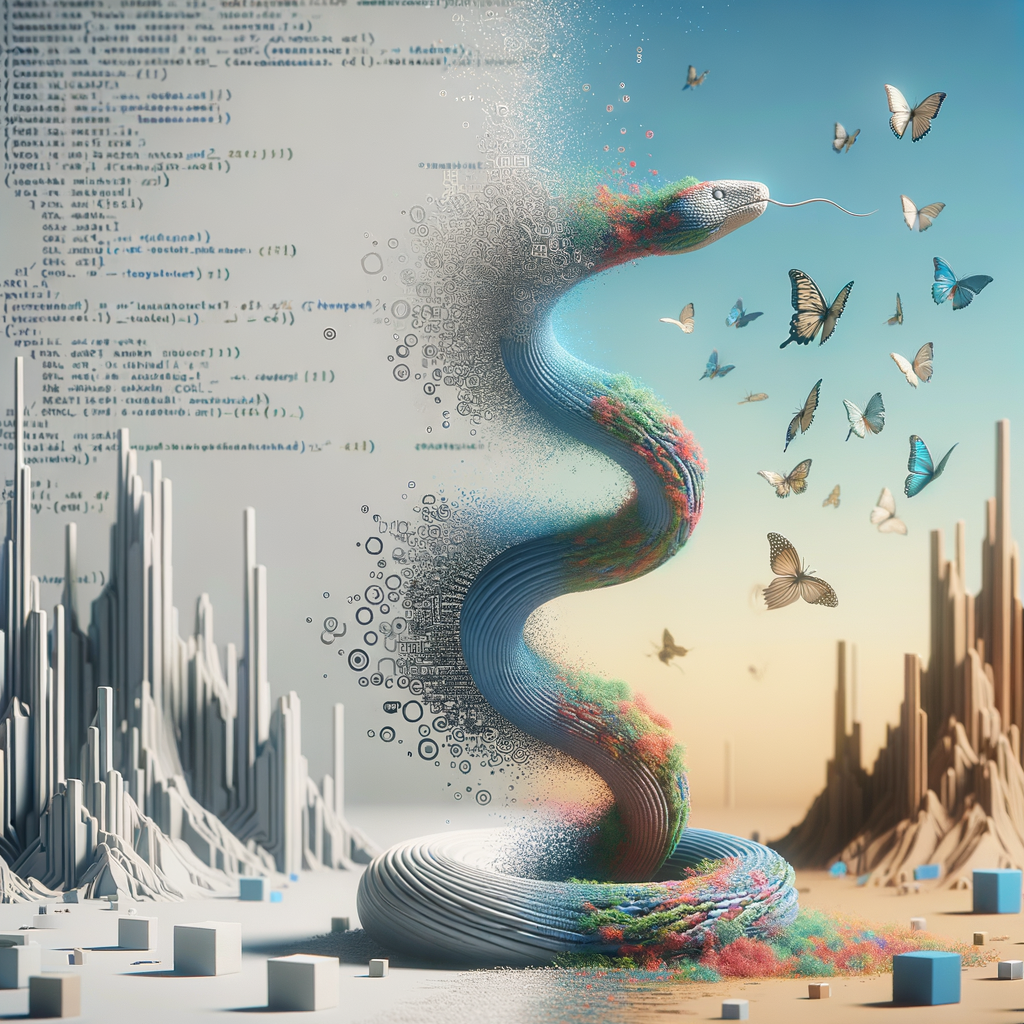
From Code to Creativity: Harnessing Python for Generative AI Art
Dive into the creative crossroads of technology and artistry as we explore how Python can revolutionize generative AI art. This blog unfolds the techniques and tools that allow developers and artists alike to create stunning AI-driven artworks. Witness the synergy between code and creativity and discover how you can embark on your own generative art journey using Python.
From Code to Creativity: Harnessing Python for Generative AI Art
The intersection of technology and art has seen many new and exciting developments over the years, but few are as groundbreaking as the rise of generative AI art. At the heart of this technological renaissance is Python, a versatile programming language widely adopted for AI and machine learning applications. In this blog post, we'll explore how Python can be utilized to create stunning generative art, the tools available, and the techniques artists and programmers can use to make their creative visions a reality.
Understanding Generative AI Art
Generative AI art refers to artwork that is created with the assistance of artificial intelligence. These artworks often emerge from a set of algorithms designed to emulate creativity. The AI can generate visual patterns, designs, and artworks based on input datasets or even simple prompts.
Python plays a crucial role in this sphere due to its rich library ecosystem, its ease of learning, and its robust community support. Libraries such as TensorFlow, PyTorch, and Processing.py make Python a go-to tool for creators aiming to delve into AI-assisted art.
Core Concepts and Techniques
Before diving into tooling and libraries, it's essential to understand some core concepts that underpin generative art:
-
Algorithmic Creativity: Using algorithms to create unique artistic outputs. Algorithms are designed to adhere to specific patterns or randomness levels, which influences the final output.
-
Neural Networks: The backbone of many AI applications, neural networks can be trained to recognize patterns and generate art that mimics those patterns remarkably well.
-
Perlin Noise: A gradient noise function used for procedural texture generation, helping mimic natural effects like cloud formations and landscapes.
-
Evolutionary Algorithms: These algorithms mimic natural evolutionary processes, allowing software to 'evolve' towards fulfilling certain artistic criteria.
Key Python Libraries for Generative Art
1. Processing.py
Processing.py is a part of the Processing Foundation, which is designed to promote software literacy within the visual arts. It provides a graphical library that allows Python to be used to create visual content with ease. Ideal for beginners, it covers the basics of digital art and visualization.
2. TensorFlow and PyTorch
These two powerhouse libraries enable deep learning practitioners to develop and train models designed for a variety of tasks—including art generation. TensorFlow's integration with Keras provides simple APIs, making it easier for artists to get started with AI.
3. Pycairo
Pycairo is a set of Python bindings for the Cairo graphics library and is used for 2D vector graphics, making it an excellent tool for generating high-quality digital art.
4. Piliko
Piliko offers tooling for exploring and creating geometric art within Python. With its roots in structural and mathematical beauty, it inspires artworks that are grounded in precision and creativity.
Creating Your First Generative Art Project
Creating your generative art involves several steps, from conceptualization to coding and finally manifesting your digital creation.
-
Conceptualization: Define the artistic styles and concepts you wish to explore. Gather inspiration from existing artworks, whether they be contemporary digital works or classic masterpieces.
-
Tool Selection: Based on your artistic vision, select tools and libraries that will enable you to translate ideas into code. Beginners might start with Processing.py, while those interested in deeper AI functionalities might choose TensorFlow or PyTorch.
-
Experimentation and Iteration: Create prototypes using your chosen tool. As you get more comfortable with the library and understand its capabilities, continuously refine your code to improve your art.
-
Share Your Work: Once satisfied with your creation, sharing your work on platforms like ArtStation or DeviantArt and open-source communities can gather feedback and appreciation.
The Future of Generative AI Art
Generative AI art serves as a testament to the harmonious blend of technology and creativity. As libraries and tools become more advanced and accessible, the barriers to entry continue to drop, enabling more artists and programmers to engage with this exciting field.
Looking to the future, we can anticipate more sophisticated tools powered by enhanced machine learning models. These advances are likely to offer unprecedented levels of control and abstraction, empowering artists to undertake ambitious creative endeavors.
Conclusion
Harnessing Python for generative AI art opens the doors to endless possibilities. As long as you're willing to explore, experiment, and create, Python offers the means to turn your wildest creative dreams into reality. The code you write is not just syntax, but a brush weaving the tapestry of art, driven by algorithms and innovation. Let this guide serve as the first step in your journey into the ever-evolving landscape of AI-driven artistry.